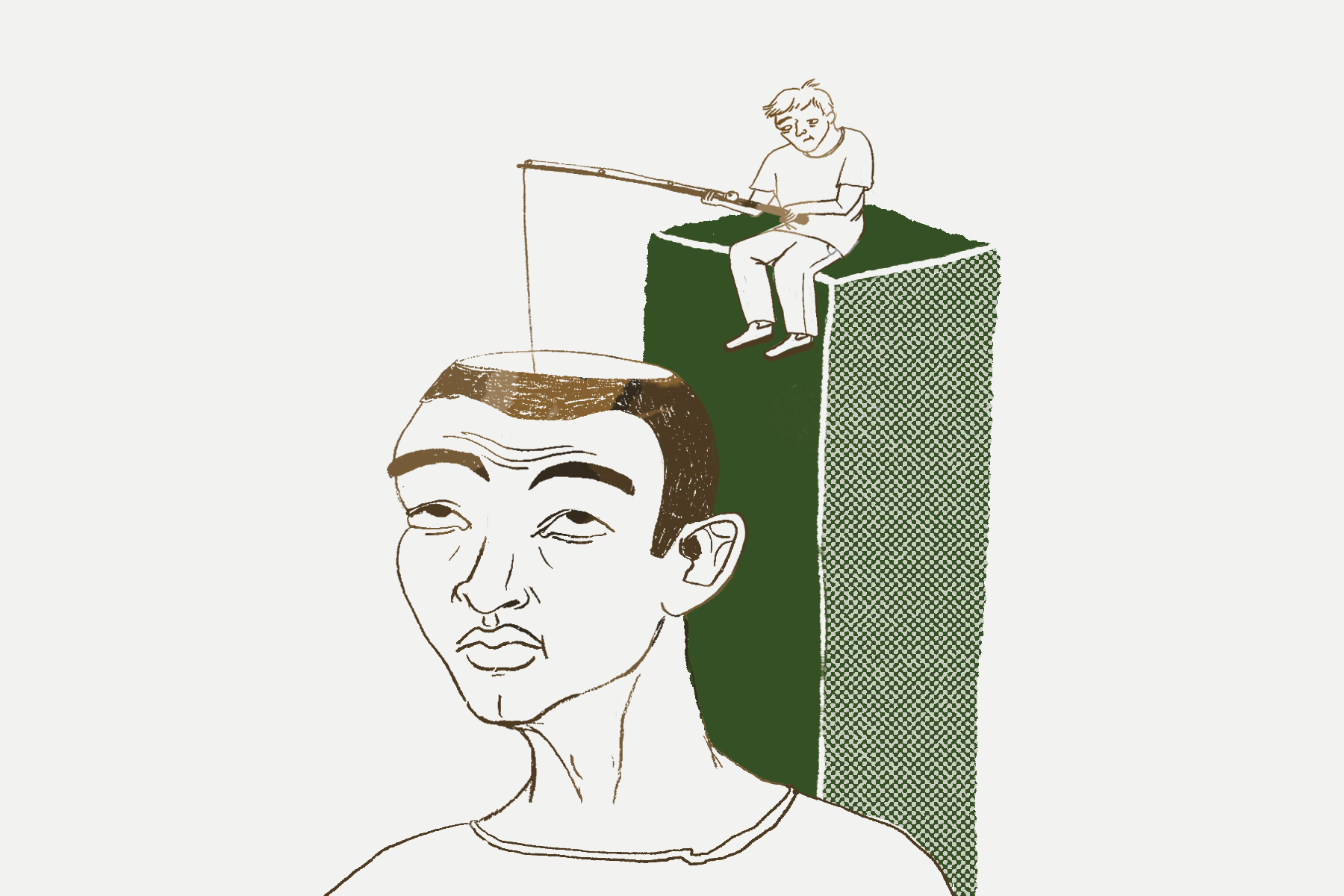Last week, TikTok comedian Brittany Broski went viral as she has many times, but for all the wrong reasons. In a video posted to TikTok and fiercely criticized on Twitter, Broski addresses backlash she received for using AAVE (African American Vernacular English) in recent posts by insisting it isn’t AAVE in the first place.
In the original video, which has since been deleted, Broski references a quote spoken by singer-rapper Nicki Minaj on an Instagram livestream. In the quote, Nicki Minaj flippantly comments “chile, anyways” after a fan makes a comment about her breasts. “[When someone says] ‘chile, anyways,’” Broski insists in her TikTok, a talk-back with fans, “that’s a meme, obviously … [or] ‘period, ‘sis’ — it’s very much Internet culture.”
The TikTok video was reuploaded to Twitter with a caption about the boldness of Broski’s attempt at relabeling common phrases and pronunciations found in AAVE as “internet culture.” The incident bodes a timely reminder of how the appropriation and misuse of AAVE online is pervasive and insidious.
https://twitter.com/slitmyclitt/status/1289286200285569024
Though Broski’s logic was quickly shut down by Black Twitter users, the idea that everyone online is entitled to use AAVE is common within internet communities. A sense of entitlement to AAVE allows non-Black internet personalities to capitalize off of African American expression for laughs and social media clout.
Like Broski, a white woman who uses AAVE as a “meme” in her TikTok, many Gen Zers online use AAVE strategically to make their tweets or Instagram captions sound more humorous or in touch with the underground slang that, once it goes viral, will be misused and overused to the point of no return.
Though Broski’s harmful argument (which she has since said she regrets) was especially toxic because of the size of her platform, the issue of exploitative performance is involved even when AAVE is appropriated on a small scale, by users who don’t earn income from their social media. As Black people online are reeling from the latest incident of a white influencer divorcing Black people from something they created, non-speakers of AAVE should reckon with how they traffic in the dialect in exploitative or racist ways.
The roots of AAVE tie the dialect to a specific cultural group and demonstrate how this speech differs from Standard American English (which African Americans also speak) in important ways. AAVE is the English primarily associated with the speech of African Americans. The word “vernacular” not only identifies AAVE as “common” or everyday speech, but also references AAVE’s roots in Black working-class communities in the South.
“Chile” for example is an African American, considerably Southern way of pronouncing the word “child,” drawling the “I” and dropping the “d” ending. “Chile,” like some other AAVE expressions that end up on Twitter, is merely a phonetic spelling of a stereotypically Black pronunciation of child. To say the word correctly as someone who is not a native speaker of AAVE requires adopting a blaccent (an imitation of the way Black people speak). For this reason, Broski and other non-Black internet users’ adoption of “chile” for meme purposes is a performance that is at best cringey and at worst racist.
AAVE shouldn’t be relabeled “internet slang” just because it goes viral. As this tweet notes, “chile” belonged to Black mothers and grandmothers as a dismissive (or endearing) remark long before it was white TikTokers’ sassy meme.
Why white people’s use of AAVE is often rooted in racism
One of the main issues with non-Black and especially white people using AAVE online is that it is appropriation in the most blatant sense. Using AAVE selectively on the internet involves the inauthentic putting on of a “Black” persona to garner attention online, usually in the form of laughs. The practice has disturbing similarities with historic examples of minstrel performance, where white actors performed degrading caricatures of Black people with dark paint on their faces and bulbous, overdrawn lips.
For nonobvious reasons, many white people use AAVE online despite never speaking that way in real life. A 2019 paper by linguistics Ph.D. candidate Christian Ilbury, titled “Sassy Queens,” explored this issue. Ilbury suggests that by selectively using elements of AAVE in their speech, the white, gay British men in his study “reap the indexical qualities of this style and its association with the stereotype of the ‘sassy Black woman’ in order to present themselves as ‘fierce’ or ‘sassy’ in their online communities.
As someone with a few social media accounts, it’s easy to see non-Black people engage in the same performance. Despite the fact that AAVE is mocked and regarded as “unprofessional” in the real world, AAVE has developed a certain clout among white people online, and white people step into the online arena prepared to adjust their speech to parody that of Black people.
The attempt often fails; individual users and corporate social media managers butcher “trendy” slang that is lifted straight from African American expressive patterns. Botched efforts at incorporating AAVE into tweets make it easy to notice when the speakers only use AAVE in select, online contexts. Therefore, it shows an attempt to capitalize on the kind of humor, cleverness or unexpectedness found in African American common phrases. However, the clunky outcome reveals an unfamiliarity with Black speech that demonstrates a lack of meaningful connections to African American communities outside of copying how they speak on the internet. But even when white people manage to get AAVE “right,” it’s still wrong.
In the past couple of years, cultural critics have convincingly linked “digital blackface” to the long history of racist minstrelsy in the United States. Minstrel shows date back to the early 19th century and were a kind of entertainment that involved most often white actors in blackface roleplaying as African Americans, portraying Black people as buffoon-like and perpetuating the “happy slave” narrative. Elements of minstrelsy and tropes from this entertainment form continued into the cinema of the 1950s.
That history makes any act of performing Blackness, intentionally racist or not, extremely charged. Yet online spaces teem with non-Black users making Black people, from iconic celebrities to reality stars to everyday African Americans, surrogates for their emotional expression via the GIF. The term “digital blackface” has been applied to white people’s copious use of reaction GIFS featuring Black people, and to examine how this internet habit — using Black characters to represent exaggerated emotional responses — traffics in harmful stereotypes about Black people as loud, aggressive, permanently “sassy” and over the top in everything we do.
Digital blackface demonstrates how GIF usage can traffic in cultural formulas that are racist, and blaccents refer to the ways non-Black people make audible changes to their self-presentation, parroting the stereotypical speech of usually the African American urban working class. But what about when digital blackface isn’t visible, like in a GIF or reaction picture, but readable?
A “digital blaccent” could thus describe the phenomena of white people temporarily inhabiting a Black persona for a saucy tweet or comedic Instagram caption. When white people do this, not only are they making the uncomfortable choice to act like something they are not, they suggest that Blackness is something to be slipped in and out of: donned when it’s time to make your followers laugh or see you differently, and shorn when it’s time to be taken seriously.
What the appropriation of AAVE means for Black creators
White people putting on blaccents in their online speech has become so normalized that Brittany Broski and others have given AAVE the name “stan language,” “Twitter speak,” etc. This mislabeling essentially divorces Black people entirely from the very expressive forms they created. This practice is all too common when it comes to other aspects of Black culture that are appropriated by the dominant group, from braided hairstyles, to musical forms, to fashion.
On Broski’s main platform, performing Blackness is the quick route to fame. Digital blackface has evolved on TikTok, with white creators lip-syncing to viral audio tracks that are often from Black people speaking in AAVE. Minaj’s “um, chile, anyways” is one trending sound clip; another is African American reality star Nene Leakes’ saying “whew, chile, the ghetto,” cut from an episode of “The Real Housewives of Atlanta.”
“Ghetto” is a pejorative descriptor used by African Americans, and is extremely problematic when used by white people. White people as a social group instituted and benefit from the oppressive forces that created the “ghetto” conditions associated with urban Black communities in the first place, and white teens on TikTok have no historic, much less personal, association with ghetto life themselves. The overlaying of this sound clip over white users’ videos is just one example of how white people performing AAVE, in this case miming a Black woman’s quote, will always have uncomfortable overtones of mimicry and dehumanization.
Yet, as this article notes, white creators on the app have “come to learn that the quickest route to success on TikTok is right through the bountiful fields of Black expression.” Like other forms of cultural appropriation, mimicking AAVE and literally miming as Black people manages to be profitable for influencers, while authentic speakers are disadvantaged in the real world.
While Broski says there is a “fine line” between “genuinely calling out a creator for using a Blaccent” versus “quoting a meme [that’s based on AAVE],” there is actually no line at all. Both acts require an exploitative performance of Blackness that privileges white creators in comedic spaces while regular Black people bear the consequences of speaking in a highly stigmatized dialect.
Purging all AAVE from your vocabulary isn’t the point here and could be a futile mission with how embedded AAVE has become in “internet humor.” But every non-Black person that uses AAVE should have self-awareness and be more cognizant of the implications of contributing to the appropriation of AAVE online. Catch yourself before engaging in digital “blaccent.” If you find it necessary to talk like a Black person to heighten the comedic effect of your joke, ask yourself why.
Non-black people should change the online communities they’re in if they aren’t aware of the ways in which these same communities encourage them to perform digital blackface and appropriate black/AAVE culture. It’s not stan culture, it’s appropriation. There’s the fine line.
— Wanja the Multifaceted Storyteller (@wanjanjama) July 31, 2020
It’s a lie to say that AAVE is “internet culture.” In fact, internet culture is mainly a reflection of our lived culture: It steals from Black people, profits from exploiting Black expressive forms and is reluctant to give credit. Non-Black people should remove themselves from communities online and in real life that pressure them to adopt the speech patterns of African Americans, and this includes many online “stan” communities. If you do end up using AAVE occasionally, then at the very least supporting Black lives and communities in loud and consistent ways should also be a part of your online engagement.

















